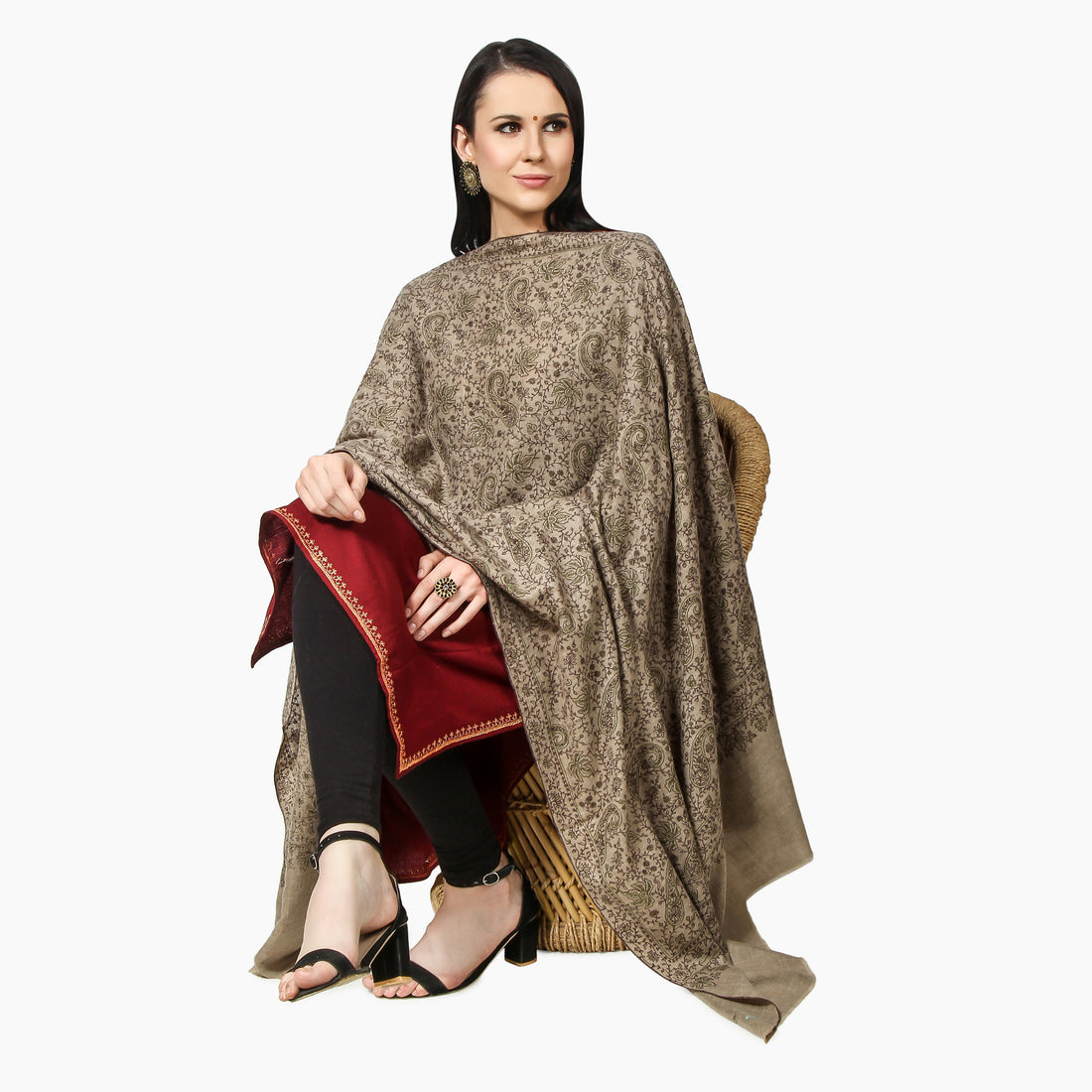
What is the Point of Pashmina?
Share
Pashmina, also known as cashmere, is a luxurious fabric that has been treasured for centuries. The origins of pashmina can be traced back to the Himalayan mountains, where the fibers are sourced from the undercoat of the Himalayan mountain goat. The process of obtaining and weaving pashmina fibers is a meticulous one that requires skill, time, and patience.
Collection of Pashmina Wool in Ladakh

Ladakh, a region in the northernmost part of India, is renowned for its production of high-quality Pashmina wool. The harsh climate and rugged terrain of the Himalayas make it an ideal place for raising the Changthangi breed of goats, which are prized for their fine, soft wool. Pashmina wool is harvested by hand from the underbelly of these goats, and then carefully sorted, washed, and spun into yarn.
A collection of Pashmina wool from Ladakh might include a variety of items, such as shawls, scarves, and blankets, all made from the finest, softest wool. These items are often adorned with intricate embroidery, adding to their beauty and value. Each piece is handmade by skilled artisans using traditional techniques that have been passed down through generations.
Pashmina wool is highly prized for its luxurious texture and warmth, making it a popular choice for high-end fashion items. However, the production of Pashmina is a time-consuming and labor-intensive process, and as a result, it is a rare and valuable commodity. A collection of Pashmina wool from Ladakh represents not only a testament to the skill and craftsmanship of the region's artisans, but also a unique and treasured addition to any wardrobe or textile collection.
Also read: Which is the most expensive wool in the world
Processing of Pashmina

Processing of Pashmina wool involves several steps to transform the raw fibers into soft, luxurious textiles. The first step is to harvest the wool from the underbelly of the Changthangi goats, which are found in the Himalayan region. This wool is then sorted and washed to remove any impurities and debris. Next, the wool is carded to align the fibers and create a uniform texture.
After carding, the wool is spun into yarn using a spindle or spinning wheel. This is a time-consuming process that requires great skill and patience. The resulting yarn is then woven into shawls, scarves, or blankets using traditional hand looms. Many Pashmina textiles are adorned with intricate embroidery or other decorative details, which are added by hand using specialized needles and threads.
Throughout the entire process, great care is taken to preserve the softness and purity of the Pashmina wool. The resulting textiles are lightweight, warm, and incredibly soft to the touch, making them highly prized for their luxurious texture and beauty.
Due to the labor-intensive nature of the processing, Pashmina wool is a rare and valuable commodity. The high quality and scarcity of Pashmina textiles make them a popular choice for luxury fashion items, and they are treasured by collectors and connoisseurs of fine textiles around the world.
Also read: Weaving a Pashmina Shawl
What is the Point of Pashmina?

Pashmina is a premium fabric that is known for its exceptional softness, warmth, and durability. It is a luxurious material that adds a touch of elegance to any outfit, and its versatility makes it a must-have in any wardrobe. Pashmina shawls and scarves are a popular accessory that can be dressed up or down, making them perfect for any occasion.
Also read: What is so special about Pashmina Shawls
Benefits of Pashmina
- Softness: Pashmina is incredibly soft to the touch, making it a comfortable material to wear.
- Warmth: Pashmina is a natural insulator, making it an excellent fabric for colder weather.
- Durability: Pashmina is a durable material that can last for years with proper care.
- Versatility: Pashmina can be worn in a variety of ways, from a scarf to a shawl, making it a versatile addition to any wardrobe.
Sustainability of Pashmina

To address the concerns of Sustainability, there have been efforts to promote sustainable Pashmina production practices and to encourage consumers to buy Pashmina products that are certified as sustainable and ethically produced. These efforts include programs to improve grazing management, to promote alternative livelihoods for local communities, and to increase transparency in the Pashmina supply chain.
Overall, the sustainability of Pashmina depends on the responsible management of grazing practices, the protection of the local environment, and the fair treatment of workers and communities. By promoting sustainable and ethical practices, we can help ensure that Pashmina production remains a viable and sustainable industry for generations to come.
Pashmina shawls do not age

Also read: Where do Pashmina Shawl come from.
How to Care for Pashmina

To ensure that your pashmina lasts for years, it is important to take proper care of it. Here are some tips for caring for your pashmina:
- Handwash your pashmina in cold water with a mild detergent.
- Gently squeeze out any excess water and lay it flat to dry.
- Do not wring or twist your pashmina, as this can damage the fibers.
- Store your pashmina in a cool, dry place, away from direct sunlight.
Conclusion
In conclusion, pashmina is a premium fabric that offers a variety of benefits, including softness, warmth, durability, and versatility. It is a sustainable material that is obtained without harming the goats and can last for years with proper care. By following the tips outlined in this article, you can ensure that your pashmina stays looking beautiful for years to come.




